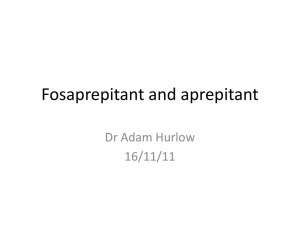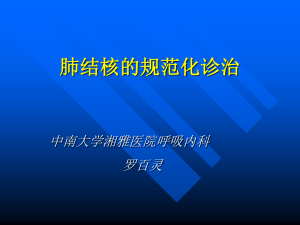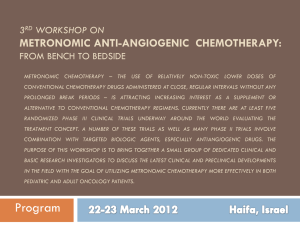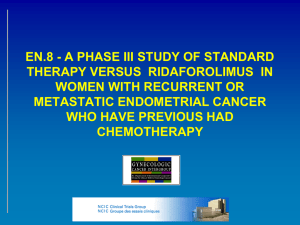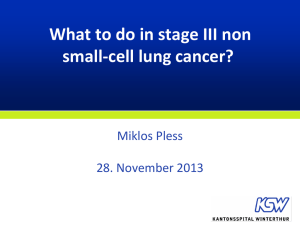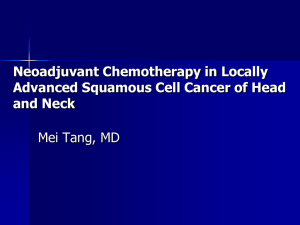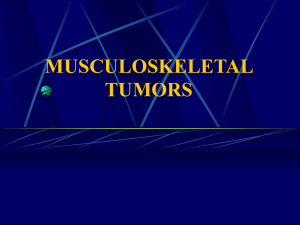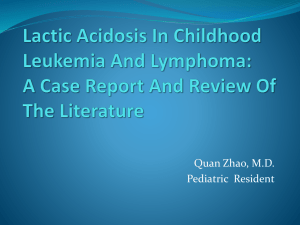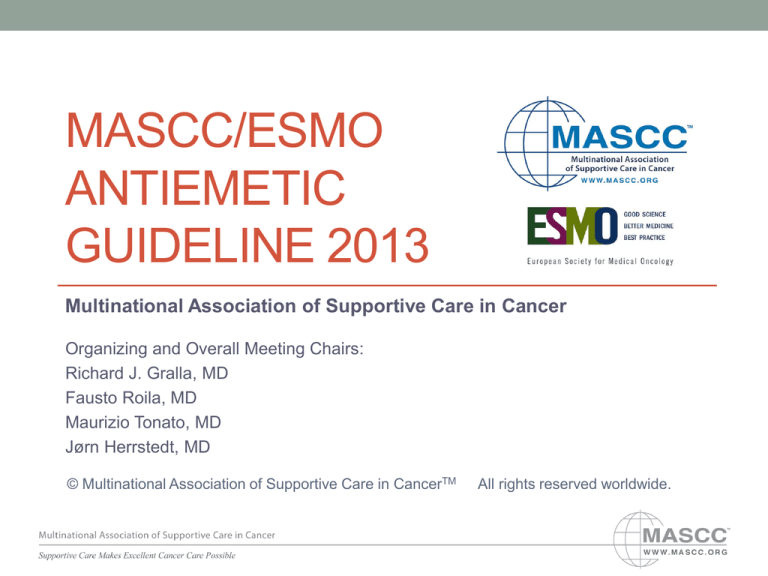
MASCC/ESMO
ANTIEMETIC
GUIDELINE 2013
Multinational Association of Supportive Care in Cancer
Organizing and Overall Meeting Chairs:
Richard J. Gralla, MD
Fausto Roila, MD
Maurizio Tonato, MD
Jørn Herrstedt, MD
© Multinational Association of Supportive Care in CancerTM
All rights reserved worldwide.
These slides are provided to all by the
Multinational Association of Supportive Care
in Cancer and can be used freely provided no
changes are made and the MASCC logo and
date of the information are retained.
For questions please contact:
Prof. Alex Molassiotis- alex.molasiotis@polyu.edu.hk
Chair, MASCC Antiemetic Study Group
ANTIEMETIC GUIDELINES:
- A few MASCC/ESMO
comments on this guideline set -
- Consensus - A few comments on this guideline set -
• This set of guideline slides represents the latest edition of
the guideline process.
• This set of panels has been endorsed by the MASCC
antiemetic guideline committee.
• The guidelines are based on the Perugia Consensus
Conference on Antiemetic Therapy June 2009.
• Latest update January 2013.
ANTIEMETIC GUIDELINES: MASCC/ESMO
PARTICIPANTS IN THE PERUGIA ANTIEMETIC GUIDELINE PROCESS
Matti Aapro, MD
Enzo Ballatori, PhD
Emilio Bria, MD
Rebecca Clark-Snow, RN, BSN, OCN
Lawrence Einhorn, MD
Birgitte Espersen, RN
Petra Feyer, MD
Richard Gralla, MD
Steven Grunberg, MD
Jørn Herrstedt, MD
Paul Hesketh, MD
Karin Jordan, MD
Mark Kris, MD
Ernesto Maranzano, MD
Alexander Molassiotis, RN, PhD
Gary Morrow, PhD
Ian Olver, MD, PhD
Bernardo Rapoport, MD
Cynthia Rittenberg, RN, MN, AOCN
Fausto Roila, MD
Mitsue Saito, MD
Maurizio Tonato, MD
David Warr, MD
ANTIEMETIC GUIDELINES: MASCC/ESMO
CONTINENTS AND COUNTRIES OF PARTICIPANTS IN ANTIEMETIC GUIDELINE
PROCESS
Asia
Japan
Africa
South Africa
Australia/Oceania
Australia
Europe
Denmark
Germany
France
Italy
Switzerland
United Kingdom
North America
Canada
United States of America
SUMMARY ACUTE NAUSEA AND VOMITING
EMETIC RISK GROUP
ANTIEMETICS
APR or FOS
Anthracycline +
Cyclophosphamide (AC)
+
5HT3 + DEX +
5HT3
+ DEX
+
Moderate (other than AC)
5HT3 + +
PALO
APR
High
5HT3
Low
DEX
OR
PALO +
Minimal
5HT3 =
serotonin receptor
antagonist
+
DEX
DEX
DEX
5HT3
DEX
+
APR
APR or FOS
OR
DRA
No routine prophylaxis
DEX =
DEXAMETHASONE
APR = APREPITANT;
FOS= FOSAPREPITANT
PALO =
PALONOSETRON
DRA =
dopamine receptor
antagonist
* NOTE: If the NK1 receptor antagonist is not available for AC chemotherapy, palonosetron is the
preferred 5-HT3 receptor antagonist.
The Antiemetic Subcommittee of The Multinational Association of Supportive Care in Cancer. - Ann Oncol 2010; www.mascc.org.
SUMMARY DELAYED NAUSEA AND VOMITING
EMETIC RISK GROUP
High
ANTIEMETICS
5HT3
Anthracycline + Cyclophosphamide
(AC)
APR or none**
5HT3
Moderate (other than AC)
DEX* + APR*
+ DEX + APR
+ DEX +
APR
DEX
PALO No
DEX prophylaxis
+ routine
Low
Minimal
No routine
DEX prophylaxis
DEX = DEXAMETHASONE
APR= APREPITANT
* DEX only, if FOSAPREPITANT used on Day 1
** If FOSAPREPITANT used on Day 1
The Antiemetic Subcommittee of The Multinational Association of Supportive Care in Cancer. Ann Oncol 2010; www.mascc.org
ANTIEMETIC GUIDELINES: MASCC/ESMO
The Process
1)
Each committee worked on its area of concentration prior to the Perugia
Meeting. At Perugia, each committee chair presented the findings of that
committee to the entire group, and included the suggested rating of the level
of evidence / confidence of the guideline.
2)
Group discussion and consensus voting then followed each presentation.
What were the criteria for consensus?
• Degree of consensus required:
67% or greater agreement among the panelists was required to
change a guideline.
• Basis of evidence to change an existing guideline:
Compelling evidence was required based on well-conducted trials,
generally with a comparator felt to be consistent with guidelines and
representing best practice. Generally at least a 10% difference was
considered to be the minimum degree of benefit sufficient for change.
ANTIEMETIC GUIDELINES: MASCC/ESMO
Committees and their Areas (1/2)
I.
Emetic classification of antineoplastic agents
II.
Acute emesis: Highly emetic chemotherapy
III. Delayed emesis: Highly emetic chemotherapy
IV. Acute emesis: Moderately emetic chemotherapy
V. Delayed emesis: Moderately emetic chemotherapy
ANTIEMETIC GUIDELINES: MASCC/ESMO
Committees and their Areas (2/2)
VI.
Emesis induced by minimal or low emetic risk chemotherapy
VII. Additional Issues: Refractory emesis, rescue antiemetic
therapy, multiple-day chemotherapy, high-dose
chemotherapy
VIII. Anticipatory emesis
IX.
(A.) Radiotherapy-induced emesis
IX.
(B.) Antiemetics in children receiving chemotherapy
X.
Future Considerations: Research Directions, Study Design,
Economic Considerations
ANTIEMETIC GUIDELINES: MASCC/ESMO
Process for the future:
Keeping the Guidelines Accurate, Up-to-Date, and Valid
Ongoing process to address emerging evidence in the future:
• Committees are permanent
• Each chair queries the committee every 6 months regarding
whether there is new information which may affect the guideline
• A steering committee queries the chairs for these suggestions
• If evidence appears compelling, all group members are notified
for their opinions
• If consensus is achieved, the Web-Guideline document
(MASCC) is updated.
ANTIEMETIC GUIDELINES: MASCC/ESMO
Committee I (1/5): The Four Emetic Risk Groups
HIGH
Risk in nearly all patients (> 90%)
MODERATE
Risk in 30% to 90% of patients
LOW
Risk in 10% to 30% of patients
MINIMAL
Fewer than 10% at risk
ANTIEMETIC GUIDELINES: MASCC/ESMO
Committee I (2/5): Emetic Risk Groups – Single IV Agents
HIGH
Cisplatin
Mechlorethamine
Streptozocin
Cyclophosphamide > 1500 mg/m2
Carmustine
Dacarbazine
MODERATE
Oxaliplatin
Cytarabine > 1000 mg/m2
Carboplatin
Ifosfamide
Cyclophosphamide < 1500 mg/m2
Azacitidine
Alemtuzumab
Doxorubicin
Daunorubicin
Epirubicin
Idarubicin
Irinotecan
Bendamustine
Clofarabine
ANTIEMETIC GUIDELINES: MASCC/ESMO
Committee I (3/5): Emetic Risk Groups – Single IV Agents
Low
Paclitaxel
Docetaxel
Mitoxantrone
Topotecan
Etoposide
Pemetrexed
Methotrexate
Doxorubicin HCL liposome injection
Temsirolimus
Ixabepilone
Mitomycin
Gemcitabine
Cytarabine < 1000 mg/m2
5-Fluorouracil
Bortezomib
Cetuximab
Trastuzumab
Catumaxumab
Panitumumab
ANTIEMETIC GUIDELINES: MASCC/ESMO
Committee I (4/5): Emetic Risk Groups – Single IV Agents
MINIMAL
Bleomycin
Busulfan
Cladribine
Fludarabine
Vinblastine
Vincristine
Vinorelbine
Bevacizumab
2-Chlorodeoxyadenosine
ANTIEMETIC GUIDELINES: MASCC/ESMO
Committee I (5/5): Emetic Risk Groups – Single Oral Agents
HIGH
Hexamethylmelamine
Procarbazine
MODERATE
Cyclophosphamide
Temozolomide
Vinorelbine
Imatinib
LOW
Capecitabine
Tegafur Uracil
Etoposide
Sunitinib
Fludarabine
Everolimus
Lapatinib
Lenalidomide
Thalidomide
MINIMAL
Chlorambucil
Hydroxyurea
Melphalan
Methotrexate
6-Thioguanine
Gefitinib
Sorafenib
Erlotinib
L-Phenylalanine mustard
ANTIEMETIC GUIDELINES: MASCC/ESMO
COMMITTEE II:
Guideline for the Prevention of Acute Nausea and Vomiting
Following Chemotherapy of High Emetic Risk:
To prevent acute nausea and vomiting following chemotherapy
of high emetic risk, a three-drug regimen including single doses
of a 5-HT3 receptor antagonist, dexamethasone, and aprepitant
(or fosaprepitant) given before chemotherapy is recommended.
Level of confidence : High
Level of consensus: High
ANTIEMETIC GUIDELINES: MASCC/ESMO
COMMITTEE III:
Guideline for the Prevention of Delayed Nausea and Vomiting
Following Chemotherapy of High Emetic Risk:
In patients receiving cisplatin treated with a combination of
aprepitant (or fosaprepitant*), a 5-HT3 receptor antagonist and
dexamethasone to prevent acute nausea and vomiting, the
combination of dexamethasone and aprepitant* is suggested to
prevent delayed emesis, on the basis of its superiority to
dexamethasone alone.
*However, if fosaprepitant is used in Day 1, only dexamethasone is
required at days 2 - 4 post-chemotherapy
Level of confidence : High
Level of consensus: Moderate
ANTIEMETIC GUIDELINES: MASCC/ESMO
COMMITTEE IV (1/3):
Guideline for the Prevention of Acute Nausea and Vomiting
Following Chemotherapy of Moderate Emetic Risk:
Women receiving a combination of anthracycline plus
cyclophosphamide represent a situation with a particularly great risk
of nausea and vomiting. To prevent acute nausea and vomiting, a
three-drug regimen including single doses of a 5-HT3 receptor
antagonist, dexamethasone, and aprepitant (or fosaprepitant), given
before chemotherapy is recommended.
Level of confidence : High
Level of consensus: High
* NOTE: If the NK1 receptor antagonist is not available for AC chemotherapy,
palonosetron is the preferred 5-HT3 receptor antagonist.
ANTIEMETIC GUIDELINES: MASCC/ESMO
COMMITTEE IV (2/3):
Guideline for the Prevention of Acute Nausea and Vomiting
Following Chemotherapy of Moderate Emetic Risk:
In patients who receive chemotherapy of moderate emetic risk, not
including a combination of anthracycline plus cyclophosphamide,
palonosetron plus dexamethasone is recommended for prophylaxis
of acute nausea and vomiting.
Level of confidence : Moderate
Level of consensus: Moderate
ANTIEMETIC GUIDELINES: MASCC/ESMO
COMMITTEE IV (3/3):
Guideline for the Prevention of Acute Nausea and Vomiting
Following Chemotherapy of Moderate Emetic Risk:
The recommended dose of dexamethasone for prophylaxis of acute
nausea and vomiting from chemotherapy of moderate emetic risk is
8 mg intravenously x 1.
Level of confidence : Moderate
Level of consensus: High
Recommended Doses of Serotonin Receptor
(5-HT3) Antagonists for Acute Emesis
AGENT
Ondansetron
ROUTE
ANTIEMETICS
IV
8 mg or 0.15 mg/Kg
5HT3
Oral
IV
Granisetron
5HT3
Oral
Dolasetron
Oral
Tropisetron
Palonosetron
+
DEX
APR
16 mg*
1 mg or 0.01 mg/Kg
+ DEX 2 mg
+ (orAPR
1 mg**)
PALO +
DEX
IV
Oral
+
100 mg***
5 mg
DEX
5 mg
IV
0.25 mg
Oral
0.5 mg
* Randomized studies have tested the 8 mg twice daily schedule
** The 1 mg dose preferred by some panelists
*** Oral dosing recommended rather than IV due to potential QT interval prolongation
Recommended Corticosteroid* (dexamethasone) Dosing
DEXAMETHASONE
Dose and Schedule
20 mg once
- Acute Emesis
High Risk
(12 mg when used with aprepitant or
fosaprepitant)**
8 mg bid for 3 - 4 days
- Delayed Emesis
- Acute Emesis
(8 mg once daily when used with aprepitant
or fosaprepitant)
8 mg once
Moderate Risk
- Delayed Emesis
Low Risk
- Acute Emesis
8 mg daily for 2 - 3 days
(many panelists give the dose as 4 mg bid)
4 - 8 mg once
* While corticosteroids other than dexamethasone are effective antiemetics, the dose and schedule of dexamethasone
coupled with its wide availability in various dose forms established it as the guideline agent of choice
** The 12 mg dose of dexamethasone is the only one tested with aprepitant in large randomized trials
Recommended NK1 Receptor Antagonist Dosing*
APREPITANT and
FOSAPREPITANT**
Dose and Schedule
- Acute Emesis
Aprepitant: 125 mg orally, once on the day of
chemotherapy
- or Fosaprepitant: 150 mg IV, once on the day of
chemotherapy
- Delayed Emesis
Aprepitant 80 mg orally, once daily for the 2 days
after chemotherapy; or none if Fosaprepitant is
used**
* As of this update, Aprepitant and Fosaprepitant are the only approved antiemetic NK1 antagonists.
** Fosaprepitant is an intravenously administered pro-drug of aprepitant. In the countries in which fosaprepitant is
available, it is indicated to replace the three-day course of oral aprepitant (125 mg) only. It should be administered at a
dose of 150mg IV on day 1 ONLY. If aprepitant is used on the day of chemotherapy, it should be followed on each of the
next two days by oral aprepitant 80 mg daily.
[Fosaprepitant was approved on its similar pharmacokinetic profile (Lasseter et al. J Clin Pharm. 47,
834 - 840; 2007) when tested against aprepitant, not by comparative antiemetic clinical trials].
ANTIEMETIC GUIDELINES: MASCC/ESMO
COMMITTEE V (1/3):
Guideline for the Prevention of Delayed Nausea and Vomiting
Following Chemotherapy of Moderate Emetic Risk:
Patients who receive moderately emetic chemotherapy known
to be associated with a significant incidence of delayed nausea
and vomiting should receive antiemetic prophylaxis for delayed
emesis.
Level of confidence : High
Level of consensus: High
ANTIEMETIC GUIDELINES: MASCC/ESMO
COMMITTEE V (2/3):
Guideline for the Prevention of Delayed Nausea and Vomiting
Following Chemotherapy of Moderate Emetic Risk:
In patients with breast cancer receiving a combination of
anthracycline plus cyclophosphamide treated with a combination of
aprepitant (or fosaprepitant), a 5-HT3 receptor antagonist and
dexamethasone to prevent acute nausea and vomiting, aprepitant*
should be used to prevent delayed nausea and vomiting (*or none if
fosaprepitant is used on day 1).
MASCC Level of confidence : Moderate
MASCC Level of consensus: Moderate
ANTIEMETIC GUIDELINES: MASCC/ESMO
COMMITTEE V (3/3):
Guideline for the Prevention of Delayed Nausea and Vomiting
Following Chemotherapy of Moderate Emetic Risk:
In patients receiving chemotherapy of moderate emetic risk (which
does not include a combination of anthracycline plus
cyclophosphamide) in which palonosetron is recommended,
multiday oral dexamethasone treatment is the preferred treatment
for the prevention of delayed nausea and vomiting.
Level of confidence : Moderate
Level of consensus: Moderate
ANTIEMETIC GUIDELINES: MASCC/ESMO
COMMITTEE VI (1/3):
Guideline for prevention of acute nausea and vomiting in
patients receiving low risk emetic agents:
A single antiemetic agent such as dexamethasone, a 5-HT3 receptor
antagonist or a dopamine receptor antagonist, such as
metoclopramide, is suggested for prophylaxis in patients receiving
agents of low emetic risk.
Level of confidence: No confidence possible
Level of consensus: Moderate
ANTIEMETIC GUIDELINES: MASCC/ESMO
COMMITTEE VI (2/3):
Guideline for prevention of acute nausea and vomiting in
patients receiving minimal risk antineoplastic agents*:
No antiemetic should be routinely administered before
chemotherapy in patients without a history of nausea and vomiting.
Level of confidence: No confidence possible
Level of consensus: High
*While unusual at this emetic level, if a patient experiences emesis it is advised that with subsequent
chemotherapy treatments the regimen for the next higher emetic level should be given.
ANTIEMETIC GUIDELINES: MASCC/ESMO
COMMITTEE VI (3/3):
Guideline for prevention of delayed nausea and vomiting in
patients receiving low or minimal risk antineoplastic agents*:
No antiemetic should be administered for the prevention of delayed
emesis induced by low or minimally emetic chemotherapy.
Level of confidence: No confidence possible
Level of consensus: High
*While unusual at this emetic level, if a patient experiences emesis it is advised that with subsequent
chemotherapy treatments the regimen for the next higher emetic level should be given.
ANTIEMETIC GUIDELINES: MASCC/ESMO
COMMITTEE VII:
Guideline for patients receiving multiple-day cisplatin:
Patients receiving multiple-day cisplatin should receive a 5-HT3 receptor
antagonist plus dexamethasone for acute nausea and vomiting and
dexamethasone for delayed nausea and vomiting.
Level of confidence: High; Level of consensus: High
For cisplatin given on days 1-5, the addition of an NK1 receptor antagonist
(aprepitant or fosaprepitant) could be considered starting no later that day 3.
The optimal administration schedule for the NK1 receptor antagonist is not
yet defined.
Level of confidence: Low; Level of consensus: Low
NOTE:
No guideline was felt to be appropriate for rescue antiemesis or high-dose
(i.e. transplant) chemotherapy.
5-HT3 receptor antagonists should be dosed day 1-5, except for palonosetron
that should be dosed on days 1, 3 and 5 only.
ANTIEMETIC GUIDELINES: MASCC/ESMO
COMMITTEE VIII (1/2):
Guidelines for prevention of anticipatory nausea and
vomiting
The best approach for anticipatory emesis is the best possible
control of acute and delayed emesis.
MASCC Level of confidence: High
MASCC Level of consensus: High
ANTIEMETIC GUIDELINES: MASCC/ESMO
COMMITTEE VIII (2/2):
Guideline for the prevention of anticipatory nausea and
vomiting
Behavioral therapies, in particular progressive muscle relaxation training,
systematic desensitization and hypnosis, can be used to treat anticipatory
nausea and vomiting.
Level of confidence: High
Level of consensus: High
Benzodiazepines are the only drugs that reduced the occurrence of
anticipatory nausea and vomiting but their efficacy tended to decrease as
chemotherapy treatments continue.
Level of confidence: Moderate
Level of consensus: Moderate
ANTIEMETIC GUIDELINES: MASCC/ESMO
Committee IXA (1/5): Levels of Emetic Risk with Radiation Therapy
RISK LEVEL*
HIGH
MODERATE
LOW
MINIMAL
AREA OF TREATMENT
TBI, Total nodal irradiation
Upper abdomen, UBI, HBI
Cranium, craniospinal,
H & N, lower thorax region, pelvis
Extremities, breast
TBI: total body irradiation, HBI: half body irradiation, UBI: upper body irradiation
* in concomitant radiochemotherapy the antiemetic prophylaxis is according to the chemotherapy-related
antiemetic guidelines of the corresponding risk category, unless the risk of emesis is higher with radiotherapy
than chemotherapy
ANTIEMETIC GUIDELINES: MASCC/ESMO
COMMITTEE IXA (2/5):
Guideline for the prevention of nausea and vomiting in
Patients receiving highly emetic radiation therapy: TBI, Total
nodal irradiation
Patients receiving highly emetic radiation therapy should receive a
5-HT3 receptor antagonist plus dexamethasone.
Level of confidence: High (Moderate with the addition of dexamethasone)
Level of consensus: High
ANTIEMETIC GUIDELINES: MASCC/ESMO
COMMITTEE IXA (3/5):
Guideline for the prevention of nausea and vomiting in
patients receiving moderately emetic radiation therapy:
Upper abdomen, HBI, UBI
Patients receiving moderately emetic radiation therapy should
receive a 5-HT3 receptor antagonist and optional short course
dexamethasone.
Level of confidence: High (Moderate with the addition of dexamethasone)
Level of consensus: High
ANTIEMETIC GUIDELINES: MASCC/ESMO
COMMITTEE IXA (4/5):
Guideline for the prevention of nausea and vomiting in
patients receiving radiation therapy of low emetic risk:
Cranium, craniospinal, H & N, lower thorax region, pelvis
Patients receiving radiation therapy of low emetic risk should receive
prophylaxis or rescue with a 5-HT3 receptor antagonist.
Level of confidence: Moderate (Low for rescue)
Level of consensus: High
ANTIEMETIC GUIDELINES: MASCC/ESMO
COMMITTEE IXA (5/5):
Guideline for the prevention of nausea and vomiting in
patients receiving radiation therapy of minimal emetic risk:
Extremities, breast
Patients receiving radiation therapy of minimal emetic risk should
receive rescue with a dopamine receptor-antagonist or a 5-HT3
receptor antagonist.
Level of confidence: Low
Level of consensus: High
ANTIEMETIC GUIDELINES: MASCC/ESMO
COMMITTEE IXB (1/3):
Antiemetics in Children
Guideline for the prevention of nausea and vomiting
following chemotherapy of high and moderate emetic risk in
children:
All pediatric patients should receive antiemetic prophylaxis with a
combination of a 5-HT3 receptor antagonist and dexamethasone.
Level of confidence: Moderate
Level of consensus: High
ANTIEMETIC GUIDELINES: MASCC/ESMO
COMMITTEE IXB (2/3):
Antiemetics in Children
Guideline for the prevention of delayed nausea and vomiting
following chemotherapy of high and moderate emetic risk in
children:
No appropriate studies are available for the prevention of delayed
nausea and vomiting in children and therefore no formal
recommendation is possible.
Many panelists feel that in the absence of studies, children should
be treated in a manner similar to that of adults receiving
chemotherapy of this risk. Doses should be adjusted appropriately
for children.
ANTIEMETIC GUIDELINES: MASCC/ESMO
COMMITTEE IXB (3/3):
Antiemetics in Children
Guideline for the prevention of nausea and vomiting
following chemotherapy of minimal and low emetic risk in
children:
No appropriate studies are available in this setting for children, and
therefore no formal recommendation is possible.
Many panelists feel that in the absence of studies, children should
be treated in a manner similar to that of adults receiving
chemotherapy of this risk. Doses should be adjusted appropriately
for children.
MASCC/ESMO ANTIEMETIC GUIDELINE 2013
© 2013 Multinational Association of Supportive Care in CancerTM
All rights reserved worldwide.

